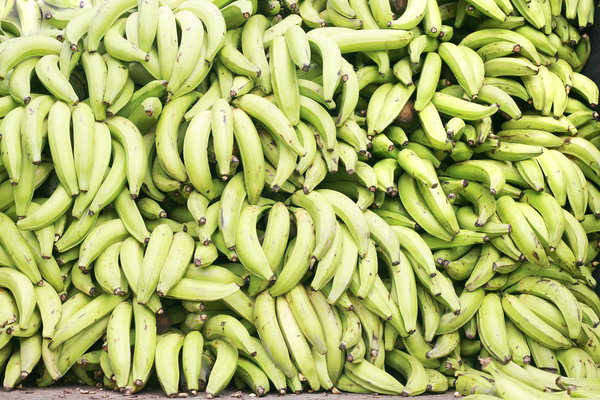Plantains are a starchy and versatile fruit that is a staple in many cuisines around the world. Unlike sweet bananas, plantains are typically cooked before consumption and offer a rich, savory flavor. When purchasing plantains, keep the following factors in mind to ensure you select the best ones for your culinary needs:
- Choose the Right Ripeness: Plantains come in different stages of ripeness, each offering a distinct taste and texture. There are three main stages:
-Green Plantains: These are unripe and firm, with a starchy texture. They are ideal for savory dishes such as tostones or chips but lack sweetness.
-Yellow Plantains: At this stage, plantains have ripened and turned yellow, with some black spots. They are slightly sweeter than green plantains and can be used in both savory and sweet dishes.
-Black Plantains: Fully ripe plantains have a deep black or dark brown skin. They are very sweet and best suited for sweet recipes like maduros or as a natural sweetener in dishes.
Select the stage of ripeness based on your recipe or preference. - Inspect the Skin: Check the plantains’ skin for any cuts, bruises, or mold. Avoid buying plantains with significant blemishes, as they may indicate poor quality or improper handling during transportation.
- Assess Firmness: The ideal plantains should be firm to the touch, regardless of their ripeness stage. Avoid plantains that are overly soft or mushy, as they might be overripe and won’t hold up well during cooking.
- Size Matters: Plantains come in various sizes, and the choice depends on your recipe and personal preference. Larger plantains are generally more mature, so they will have a sweeter flavor and softer texture when ripe.
- Buy in Moderation: Since plantains continue to ripen after purchase, consider buying them in moderation if you don’t plan to use them immediately. This way, you can enjoy them at their optimal ripeness.
- Organic vs. Conventional: If possible, opt for organic plantains to reduce exposure to pesticides and support sustainable farming practices. Organic varieties are grown without synthetic chemicals and provide a healthier option.
- Check for Seasonal Availability: Plantains are typically available year-round in many regions, but the quality and availability might vary based on your location. Check for the best time to buy them in your area to get the freshest produce.
- Storage Tips: Store unripe plantains at room temperature until they ripen. Once they reach the desired ripeness, you can refrigerate them to prolong their shelf life. Overripe plantains can be stored in the refrigerator or used immediately for sweet dishes.
- Culinary Uses: Plantains are incredibly versatile and can be used in both sweet and savory dishes. They can be fried, boiled, baked, or grilled to create a wide range of recipes, such as tostones, maduros, mofongo, and more.
- Allergies and Dietary Restrictions: Keep in mind that plantains are a naturally gluten-free and vegan-friendly food. However, if you have any allergies or dietary restrictions, always read the packaging or consult with a healthcare professional before consuming them.
By following this buyer’s guide, you can confidently select the best plantains for your culinary adventures and enjoy the delicious flavors they bring to your meals. Bon appétit!
